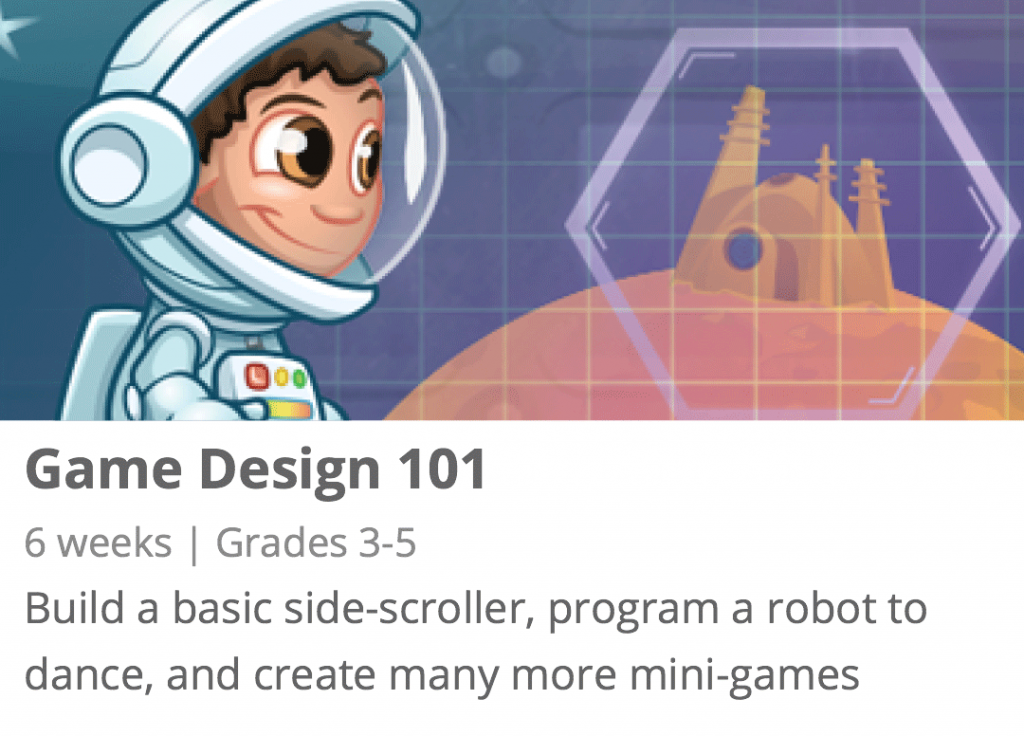Coding Classes
Kids are surrounded by technology and computers are central to most aspects of our lives. Kids who learn the basics of programming can become better architects of their future world. Kids relish the challenge to become active participants instead of passive consumers. In addition, the computational thinking (analytical, logical) skills that underlie coding will be required for future knowledge workers to continuously adapt to our increasingly data filled world. There is growing recognition that computer literacy is essential for a 21st century workforce.

Game Design 101
An introduction to programming for beginners in upper elementary grades. Introduction to programming using a fun scenario-based approach where students build two complete games.
Side Scroller Survival introduces students to basics of motion and animation. In BeatBot Battle, students program a robot to make it dance. On completing this lesson plan students will be able to build simple games, animations and a variety of simple projects.
Topics Covered: Use sequencing, pattern recognition, loops, conditional logic to create programs. Create scenes, add sounds and music and use keyboard controls to drive your programs. Learn about motion, broadcasting messages and adding special effects.

Game Design 102
Build a drawing-based car racing game, complete BeatBot Challenge, and create several other mini-games.
Students advance their game design skills. They complete BeatBot Challenge by making the robot moonwalk and respond to different kinds of messages. Then they build Paint Racer, a pen-drawing game, and learn about angles, color, direction, and positioning. Upon completing this course, students will have a good understanding of a number of intermediate programming concepts such as conditional statements, messaging, timers, random numbers, and positioning using x- and y-coordinates.
Topics Covered: Draw geometric patterns using pen-based drawing primitives to manipulate angles, direction, sizes, and color. Learn about timers, random numbers, interactions between objects, and special effects.

Game Design 201
Build a projectile-physics based game with explosions, an adventure game, and several mini-games. A fast-paced introduction to programming for students in grades 6-8. Introduce programming fundamentals as students build two arcade-inspired games from start to finish. In Cannon Crasher, a physics game, students harness the power of the physics engine to program realistic jumps, projectiles, and bouncing balls. The Adventure Game features a knight who has to defeat enemies to reach treasure. Students program arrow keys, fluid motion, hero and enemy behavior, and winning conditions.
Topics Covered: Events, keyboard and mouse interaction, conditional loops, nested loops, functions, and sending and receiving messages. Basic physics programming such as gravity, bounding boxes, bouncing, projectiles, impulses, and collisions.

Game Design 202
Build a top-down shooting game, a projectile physics game, and a 2-player aerial battle.
Students continue to apply what they have learned, and learn more advanced programming principles as they complete Cannon Crasher, the projectile physics game, and build a brand new top-down side scrolling adventure. In Cannon Crasher, they complete the game by adding impulses, setting angles, trajectories and programming collisions. In Dragon Attack, students define multiple levels, multiple lives and program a boss enemy, while learning about variables and cloning.
Topics Covered: Events, keyboard and mouse interaction, conditional loops, nested loops, sending and receiving messages, fluid motion, parallax scrolling, local and global variables, functions, and object cloning.